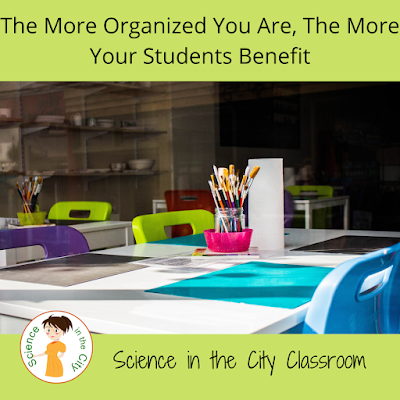As teachers, we spend a lot of our time thinking about the needs of our students. After all, it’s our job to make sure that they receive the style of learning best suited to them. We don’t want children left behind.
But it turns out that we can help students the most when we focus on improving ourselves - how we do our job. Yes - we all know our subjects inside out. But many of us are lacking in the organization department. And that’s slowing us down, draining our energy, and making us less available to students.
In this post, therefore, we take a look at some of the strategies that you can use to improve how you spend your time and deliver lessons. Here are some of the steps that work for all teachers.
Add Bins And Buckets To The Classroom
Organizing for one child is a challenge. But when you have thirty in a classroom, it’s a nightmare.
The solution here for many teachers is to use labeled buckets and bins, arranged on racks. Storage containers allow you to neatly tidy away all of your learning tools and implements, without them cluttering up the classroom or storage cupboards.
How you arrange this is very much up to you. Usually, you can think of overall categories that allow you to make the best use of your available space.
Create Paper Routines
Classrooms have a habit of generating vast quantities of papers. Teachers have papers for teacher reports, students have them for graded tests and homework assignments. And you may even have papers for lesson plans.
Here’s an idea: create a routine for all your papers by placing them in specific trays. One tray is for tests, another for student work, and another for staff documents you’re working on right now. This way, you can prevent them from getting muddled up and see how much work you need to do before your various deadlines.
Keep Your Notebook With You At All Times
We can’t emphasize this point enough: keep your notebook with you at all times. It’s critical because it allows you to jot down ideas and record information on the fly, instead of trying to recall it from memory later.
Sites like https://nottai.com/ show some examples of the types of notebooks that teachers use. Yes - they’re colorful. But they also include handy dividers that allow you to segment information logically.
Keep Your Lists Nearby
You can either use a notebook for this or a separate piece of paper. But always make sure that you keep your lists nearby. Most people keep their lists next to their computers or desk, according to https://www.mindtools.com. This way, you always have a record of what you’ve done so far, and what you still need to do.
Make Sure That Every Item In The Classroom Has A Home
Lastly, you’ll need to ensure that there’s a place for every learning tool in your classroom and that your students know where they are. If things don’t have a home, clutter will quickly build up.
What are your organization tips? Please comment below and share your best classroom tips!










